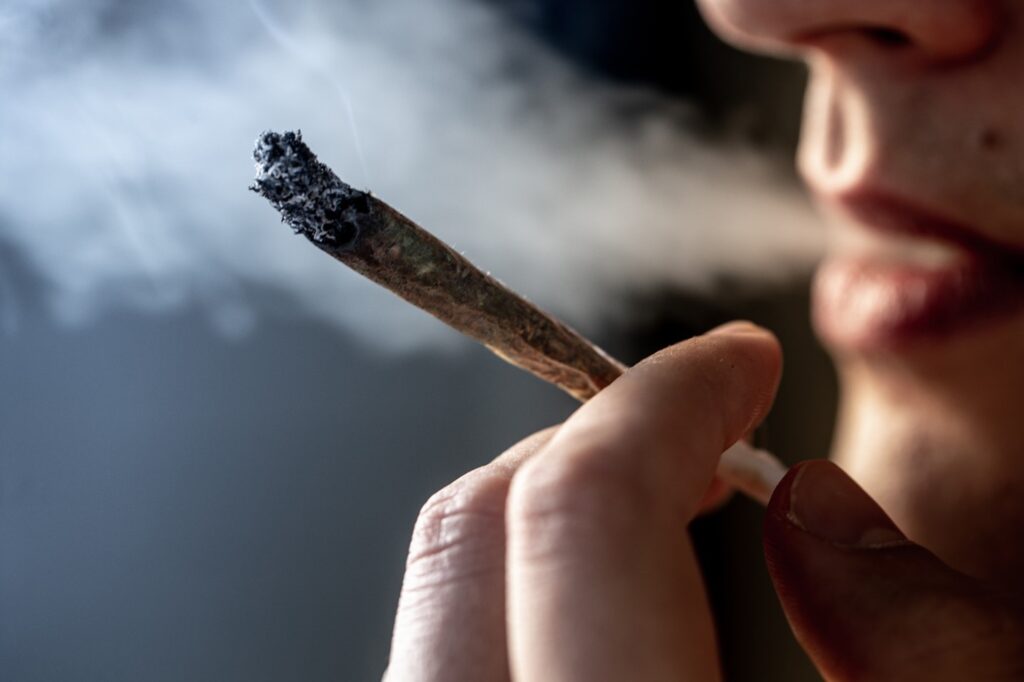
By Peyton Majors
Christian Action League
August 12, 2022
New research that ties an increase in marijuana addiction and mental health problems to common, high-potency marijuana should cause North Carolina legislators to pause before legalizing its medical use, critics of legalization say.
The new study, published in the journal Lancet Psychiatry, suggests that “people who use high-potency cannabis” are more likely to experience addiction and a psychotic disorder — such as schizophrenia — than are those who use low-potency cannabis, according to Neuroscience News. (Cannabis is another name for marijuana).
High-potency cannabis is the most popular form of marijuana on the market.
The authors called it the first “systematic review of the association of cannabis potency with mental health and addiction.”
“Our systematic review found that people who use higher potency cannabis could be at increased risks of addiction as well as psychosis when compared to people who use cannabis products with lower potencies,” said lead author Kat Petrilli, a psychology professor from the University of Bath.
The study was released just as another set of data — that on the potency of marijuana — is being debated. A 2021 report from the United States Senate Caucus on International Narcotics Control found that today’s marijuana has a significantly higher concentration of THC (tetrahydrocannabinol) — the substance in cannabis that alters a user’s mental state — than the marijuana of 50 years ago that was popular during the 1960s and 1970s.
In the 1990s, the average THC concentration of a marijuana plant was 4 percent, according to the U.S. Senate study. It increased to about 12 percent by 2014 and to between 18 and 23 percent by 2021 — with some concentrations reaching 80 percent.
The dramatic increase is due to new varieties and cultivation practices.
The North Carolina legislature is considering a bill, SB 711, that would allow the state to issue licenses to individuals and businesses in order to grow, cultivate, produce and sell marijuana for medicinal purposes.
“I am old enough to remember as a boy watching television commercials where doctors were featured, saying, ‘More doctors smoke Camels than any other cigarette.’ There was another commercial that featured a dentist who said, ‘As your dentist, I would recommend Viceroys.’ My own parents were smokers and I lived in a blue haze of smoke in the house most of the time. When I asked my parents about smoking, they claimed it was good for you. They said it helped prevent getting sick with a Cold,” said Rev. Mark Creech, executive director of the Christian Action League. “That’s what they were led to believe in those days. People were made fools by the tobacco industry. It’s happening all over again. Today the marijuana industry tells us marijuana is good for people and it helps them. Even marijuana where it’s been made legal and ‘regulated’ often contains mold, pesticides, bacteria, and other additives. State inspectors constantly miss key safety issues. This is not reefer madness I’m talking about: what we are doing is not safe. Smoking was never healthy. Smoked marijuana is not medicine! What I’m saying are the facts.”
John Stonestreet, president of the Colson Center for Christian Worldview, argued that marijuana policies on the state level “are clearly headed in a direction that does not align with what we now know.” He quoted a 2020 NIH study that found the pain relief benefits of marijuana require THC levels no higher than 5 percent — in other words, at levels far below today’s marijuana.
“While the political posturing continues, a dystopian reality born of the marijuana revolution is unfolding outside statehouses,” Stonestreet wrote. “Doctors and emergency rooms across the country have sounded the alarm on the spike in psychosis, suicidal ideation, actual suicide, schizophrenia, and addiction-like behavior they have seen among young people using high-potency marijuana.”
A June New York Times story about THC levels told the story of a 14-year-old girl, Elysse, who became hooked on a vaping form of odorless marijuana that caused her to pass out and vomit. The THC levels of her cannabis were upwards of 90 percent.
“Today’s cannabis products are making some teenagers highly dependent and dangerously ill,” The Times story said.
Marijuana is particularly dangerous for teens, the story said, because of its impact on their still-developing brains.
“In addition to uncontrollable vomiting and addiction, adolescents who frequently use high doses of cannabis may also experience psychosis that could possibly lead to a lifelong psychiatric disorder, an increased likelihood of developing depression and suicidal ideation, changes in brain anatomy and connectivity and poor memory.” the story said.
In Montana, legalization apparently has had a major impact on road safety. According to KTVH, in 2021 — the first year of legalization — the state experienced a 17 percent increase in DUI cases that were tied to a positive test for THC.
